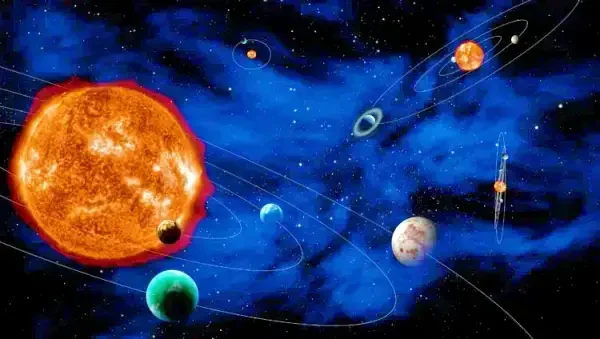Where Are the Extraterrestrial Civilizations? The question, “Where is everyone?”, encapsulates the enigma of the Fermi Paradox.
An apparent contradiction between the high probability of extraterrestrial life and the lack of evidence or contact with such civilizations.
Despite numerous theories and advancements in technology, we remain in a state of cosmic solitude.
Let’s explore some fascinating explanations for this silence and delve into their implications.
Extraterrestrial civilizations, understanding the Fermi Paradox.
The paradox arises from two conflicting premises:
1. The universe is vast, with billions of stars and potentially habitable planets.
2. There is no concrete evidence of extraterrestrial life or communication.
This paradox has sparked countless hypotheses, ranging from the rarity of life to the possibility of advanced civilizations avoiding us deliberately.
The Zoo Hypothesis.
Imagine Earth as a natural reserve or a zoo. Advanced extraterrestrial civilizations might observe us discreetly, akin to how we study animals in their natural habitats.
This idea, first proposed by John Ball in 1973, suggests that alien life refrains from direct contact to allow our natural evolution.
Parallels can be drawn to the “Prime Directive” from Star Trek, where advanced civilizations avoid interfering with less developed ones.
Could we be part of a cosmic experiment, our actions studied by entities far beyond our understanding?
Extraterrestrial civilizations, the Voluntary Quarantine Theory.
Contrary to the Zoo Hypothesis, the Voluntary Quarantine Theory posits that extraterrestrials deliberately isolate themselves.
Space, they reason, might be perilous—a realm of predatory civilizations or catastrophic technologies. By staying hidden, they avoid potential threats.
This aligns with the idea of “berserker probes”—self-replicating machines that sterilize planets.
Advanced civilizations might deploy defensive mechanisms, such as Sandburg probes, to maintain their isolation.
The Simulation Hypothesis.
Could we exist in a simulated universe? According to this theory, extraterrestrial contact is absent because our reality is a controlled simulation.
In this framework, alien civilizations might not exist within our simulated realm, or their absence could be a deliberate parameter set by the simulators.
This concept resonates with philosophical questions: If a tree falls in a simulated forest, does it make a sound?
If we are in a simulation, it opens a Pandora’s box of existential possibilities.
The Great Filter Hypothesis.
The Great Filter theory suggests that intelligent civilizations face insurmountable challenges that prevent them from achieving interstellar colonization.
These challenges could occur:
• Before intelligent life evolves: Life might be exceptionally rare.
• During technological development: Civilizations might destroy themselves through warfare, environmental collapse, or uncontrollable AI.
If the Great Filter lies ahead of humanity, it raises existential concerns about our survival.
Extraterrestrial civilizations, Galactic Migration.
The Edge of the Milky Way. Milán Ćirković and Robert Bradbury propose that advanced civilizations might migrate to the cooler, less energy-intensive regions of the galaxy.
Supercomputers and other technologies require significant cooling, which could lead civilizations to settle in the galactic outskirts.
If this is true, our search for extraterrestrial life might be focused in the wrong areas, overlooking these peripheral zones.
The Technological Invisibility Hypothesis.
Extraterrestrial civilizations might use advanced communication methods that are beyond our technological grasp.
While humanity listens for radio signals, alien civilizations could be employing laser communications, gravitational waves, or other unknown mechanisms.
Moreover, they might leave “calling cards” in the form of massive geometric structures in space—an indirect but detectable form of communication.
Targeted Panspermia.
Francis Crick’s theory of directed panspermia suggests that alien civilizations might have seeded life on Earth.
If true, humanity itself might be a product of extraterrestrial intervention, explaining our lack of contact.
These civilizations might have moved on, leaving us as their distant progeny.
The Gamma-Ray Burst Theory.
Astrophysicist James Annis theorizes that periodic gamma-ray bursts—a type of catastrophic cosmic event—could sterilize vast regions of the galaxy.
These bursts might prevent intelligent life from advancing beyond certain thresholds.
However, as these events decrease over time, we could be entering a phase transition where intelligent life becomes more prevalent.
Extraterrestrial civilizations, Implications and the Search Ahead.
Each theory offers profound implications for humanity’s place in the cosmos.
Whether we are observed from afar, deliberately ignored, or alone in a silent universe, the answers to these mysteries will shape our understanding of existence.
The silence of the cosmos might not indicate absence but rather a complex interplay of factors beyond our comprehension.
As our technology advances, so too does our ability to detect faint whispers of extraterrestrial life. From expanding the scope of SETI to exploring other communication modalities, the quest continues.
Perhaps the true answer lies not in discovering them, but in understanding ourselves. As Carl Sagan aptly put it: “The cosmos is within us. We are made of star stuff. We are a way for the universe to know itself.”
By addressing the Fermi Paradox, we delve not only into the search for extraterrestrial civilizations but also into the essence of human curiosity and survival.
The universe awaits; we just need to ask the right questions.
You Good Day!




